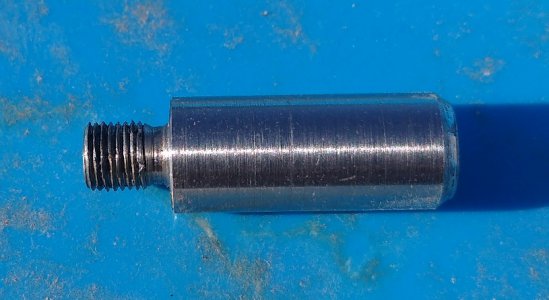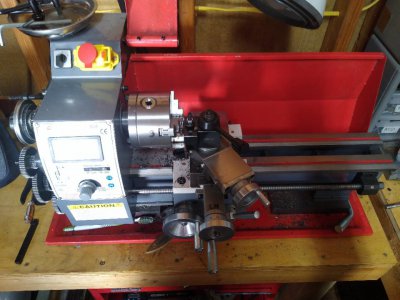I recently cut an M5x0.5 thread in salvaged mystery steel (the counterweight shaft of a junky telescope mount) using a carbide insert on my mini lathe. I could tell from the ragged chips that it wasn't cutting right. It left burrs on the threads. The part ended up fitting okay, but I'd like to do a better job next time.
I know you can't tell me what actually went wrong, but I'm hoping you can add to my list of things that may have gone wrong...
I know you can't tell me what actually went wrong, but I'm hoping you can add to my list of things that may have gone wrong...
- Speed and feed - I know carbide likes to run fast
- Tool height - maybe a hair too low, creating negative rake
- Lubricant - I used Chinese mystery cutting oil



